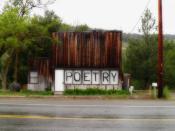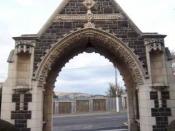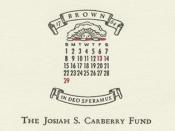Poem Explication: "Dulce et Decorum Est"
With the number of poems that exist, very few have the capability of leaving a last message in one's mind. "Dulce et Decorum Est", a war-inspired poem written by Wilfred Owen, makes an impact on the reader's idea of war brutality. It bring the realization of all the horror that soldiers had gone through, and questions the worth of one dying for his own country.
To deliver his three-stanza poem, Owen uses an ABABCDCD?rhyme scheme. There is a very morbid tone to this story, and gives the reader a heavy and dreary feeling. Even through the action of battle, one is given a sick feeling rather than a sense of excitement or a suspenseful feeling. With many people's view of the glamour and excitement of wars, especially from today's movies, this poem does a great job of giving it's readers a reality check.
In the beginning there is heavy imagery given to describe the soldiers' state of being and the gas attack as well. It is described how "Men march asleep", and how they were "coughing like hags". By doing this, Owen succeeds to establish that the men are so worn-out, even the sounds of an impending battle do not stir them.
Once the gas attack begins, Owen continues to use imagery to describe the gas as a "green sea", where he sees his comrade "drowning". Other heavily used devices were metaphors and similes. Some examples include, "And flound'ring like a man in fir or lime?", "His hanging face, like a devil's sick of sin", and "Obscene as cancer, bitter as the cud". The device was mostly used to describe the horrifying death of the narrator's comrade.
The poem is told through the first-person point of view, allowing the reader to...



Great!
im currently doing a module on ww1 poetry, and this essay has helped me a lot! it raises a couple of interpretations i hadnt even thought of. thanx loads!
7 out of 9 people found this comment useful.